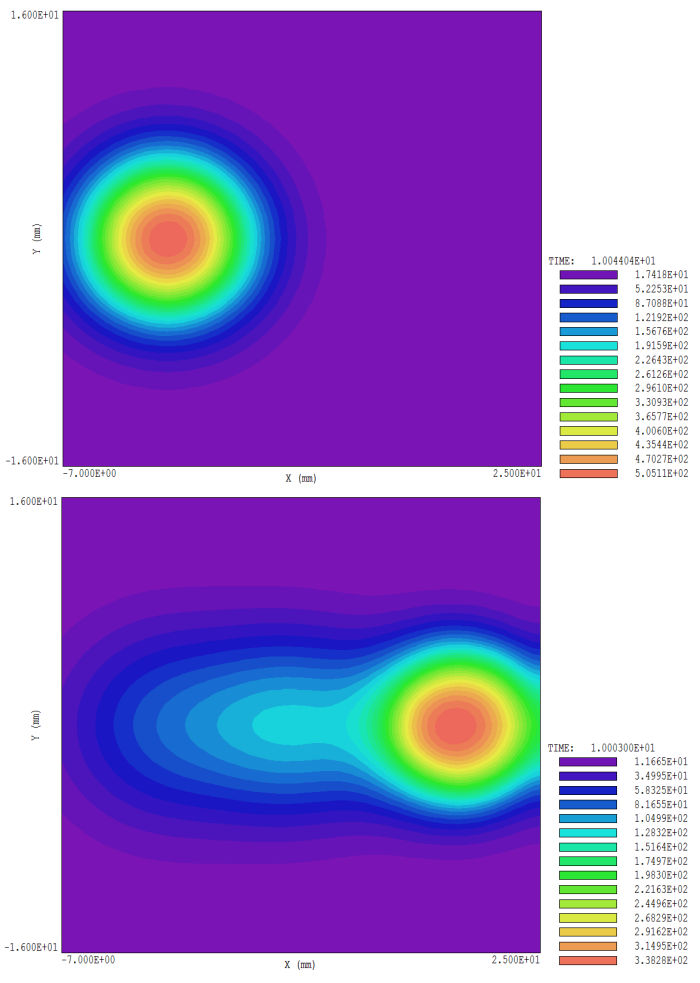The generation of X-rays via bremsstrahlung is energetically inefficient at electron beam energies of interest for medical applications. Therefore, high-power electron beams are necessary for procedures such as CT scans. Dissipation of energy to prevent target melting is a major issue. One solution is a rapidly-rotating target. Alternatively, we recently worked with a customer using a liquid jet of gallium alloy as the X-target.
HeatWave, a component of our Xenos suite for X-ray source design, performs 3D thermal conduction calculations. Energy deposition profiles determined by the GamBet Monte Carlo code can be imported as thermal source distributions. The distributions can be modulated with user-specified functions to represent pulsed or periodic beams. This capability can provide, at best, an rough approximation to a rotating target.
The HeatWave solution is performed on a stationary mesh — it would be difficult and unwieldy to introduce a moving mesh. On the other hand, it is relatively easy to move the heat source through the mesh, achieving the same result. Accordingly, we have introduced a new capability in HeatWave to generate exact moving-target simulations. This article summarizes its operation.
Power distributions from the programs Aether (microwave fields), RFE3 (time-dependent electric fields) and GamBet (Monte Carlo X-rays and electrons in matter) can be imported into HeatWave with the SourceFile command. The only restriction is that the field and particle solutions must be performed on the same mesh as that used for the thermal solution. The result is that the elements of the HeatWave solution have assigned source power densities. File sources may be used inb both static and dynamic solutions. In the dynamic mode, a time variation may be associated with the file source. The variation may be defined by a table of [t,f(t)] values using the SourceMod command. Here, f(t) is a multiplication factor. The factor may also be defined by an algebraic expression.
In the current version of HeatWave, the element power distribution is initially copied to a reference mesh variable. A time-dependent displacement vector is defined with the new commands XDisp, YDisp and/or ZDisp. As with the modulation functions, the time-dependent vector components may be defined by either a table of values (e.g., [t, x(t)]) or an algebraic function. The element power densities from the reference mesh are periodically mapped to the computational mesh using the current value of the displacement vector [x(t), y(t), z(t)]. The mapping algorithm conserves energy. Depending on the displacement, some source energy may be mapped outside the source region. As an example, heating of a rotating target could be modeled using a sawtooth function for x(t).
Figure 1 shows the results of a demonstration calculation. A 4 MeV electron beam of radius 5.0 mm with current 23.9 A impinges on an aluminum target of thickness 10.0 mm. The top section shows the temperature distribution in the center of the target (z = 5.0 mm) with a total irradiation time of 10 s and a fixed source distribution. In contrast, the lower section shows a solution where the source moves the right 20.0 mm during the 10 s interval. Note that the peak temperature drops from 505.1 °C to 338.2 °C.

Figure 1. Electron beam heating demonstration. Top: Stationary source. Bottom: Source moved 20.0 mm to the right over the 10 s calculation period.
LINKS